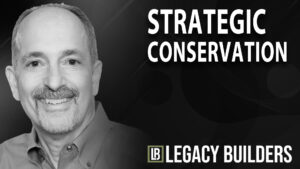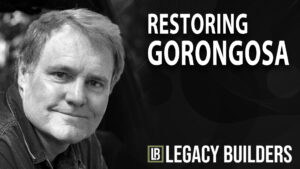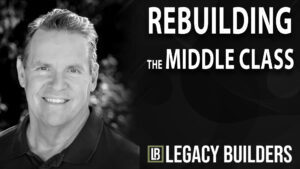Sec179 Businessequipment
Updated: 11/12/10
Most new business equipment can be either depreciated over its useful life or expensed immediately under Internal Revenue Code Section 179. The maximum deduction is based on the following schedule for the date in which the tax year begins. Each 1040, whether Single or Joint, is limited to one maximum. 179 expenses passed through via K-1s from partnerships (1065), S-corps (1120S), or trusts (1041) are limited at the 1040 level to the one maximum amount. A C corporation is able to deduct its own 179 expenses in addition to what is claimed on the 1040s of the owners. This is one of the many ways in which C corporations can save thousands of dollars in taxes over S corps.
The following table is of the Federal maximums. Many states have not matched these amounts and have much smaller allowable deductions. In those cases, it is critical to maintain two sets of depreciation schedules; one for IRS and another for the State. Since the basis of an asset may be different for each tax agency, the gain or loss on its disposal will similarly be different.
2006
$108,000
2007
$125,000
2008
$250,000
2009
$250,000
2010-2011
$500,000
For tax years beginning in 2003 through 2009, a taxpayer may make, revoke or change an election without IRS consent on an amended return filed during the period prescribed for filing an amended return (e.g., within three years from filing original return). For other taxable years, unless permission is obtained, an election not made on an original return must be made on an amended return filed by the due date of the original return (including extensions).
Qualifying Property
Generally, the types of business equipment that qualify for this expensing election are the same kind that qualified for the now-defunct Investment Tax Credit. Most movable assets qualify. Permanent structures do not qualify. Business vehicles with a gross vehicle weight over 6,000 pounds qualify for the full Section 179, while lighter vehicles have a much lower dollar limit.
Currently, the maximum amount that can be claimed for SUVs weighing between 6,000 and 14,000 pounds is $25,000. The remaining Section 179 deduction can be used for other kinds of business equipment, including vehicles weighing more than 14,000 pounds.
In Addition, to be eligible for the Section 179 deduction, the asset must be used at least 50% for business in the first year it is placed in service. The cost eligible for the deduction is the business usage percentage.
Another common question people ask is whether the Section 179 expensing election is only available for the purchase of brand new assets or whether things such as used vehicles qualify. The answer is still the same. The asset just has to be new to you. You can claim the deduction for items purchased from anyone other than yourself or an entity controlled by you, such as a closely held corporation.
Here are more details on qualifying and nonqualifying property, courtesy of the indispensable QuickFinder reference book.
Qualifying Property:
Tangible personal property (such as machines, equipment, furniture).
Certain other tangible property used for specific purposes.
Single-purpose agricultural or horticultural structures.
Certain storage facilities.
Railroad gradings or tunnel bores.
Nonqualifying Property:
Property held for the production of income (investment property, most rentals).
Real property, including buildings and their structural components, air conditioning and heating units.
Property acquired by gift, inheritance or trade.
Property purchased from certain related parties.
Controlled group to controlled group transactions.
Property used outside the United States.
Property used in connection with furnishing lodging.
Property used by tax-exempt organizations and governmental units.
Property used by foreign persons or entities.
Property held by an estate or trust.
Property used by a passive activity.
Intangible property (including computer software).
Temporarily for taxable year 2010 ad 2011, the most current tax provision expands the definition of property qualifying for Section 179 to include certain real property – specifically, qualified leasehold improvement property, qualified restaurant property and qualified retail improvement property.
Phase-Out of Sec. 179
To prevent the wealthy, who buy a lot more new things than “normal” people, from receiving this tax benefit, there is a phase-out of the allowable Section 179 deduction if too much new §179 qualifying property is purchased during the tax year. For each dollar of newly acquired qualifying property purchased during the tax year that exceeds the amounts established by our rulers in DC, the Section 179 deduction is reduced by a dollar; but not below zero. For 2010 and 2011, that phase-out begins at $2,000,000. The phase-out thresholds for taxable year 2006 through 2011 are as follows:
2006
$430,000
2007
$500,000
2008
$800,000
2009
$800,000
2010-2011
$2,000,000
Employees Can Claim Section 179 Deductions
Fortunately, IRS regulations define active trade or business income to include the trade or business of being an employee. This allows the use of Section 179 expenses to somewhat offset wages, tips and other income received as an employee.
The big difference between claiming the Section 179 for a self employed (SE) person and a W-2 employee is the effect on the person’s AGI (adjusted gross income). SE individuals claim it on their Schedule C and it reduces their AGI. W-2 employees have to claim it on Form 2106, which flows to the Miscellaneous Deductions section of their Schedule A. This does reduce their taxable income, but not AGI. Another difference is that Section 179 expenses will reduce a Schedule C proprietor’s 15.3% self employment tax; but it won’t reduce a W-2 employee’s FICA or Medicare taxes at all.
Bottom line, you can claim Section 179 for business equipment, including vehicles, that you use as a W-2 employee; but it won’t save you as much in taxes as it does for a self employed person.
Limits On Section 179
Section 179 cannot be used to reduce taxable income below zero. However, this isn’t always based on the business income alone.
For corporations (Form 1120), the Section 179 deduction can only be as high as needed to zero out the taxable income. If there’s already a break-even or net loss, no current 179 is allowed and the unused Section 179 must be carried over (on Form 4562) to the next tax year.
For Schedule C sole proprietorships, it is actually possible to use Section 179 to create or increase a large net loss if there are other sources of income (W-2s, etc.) that result in a positive taxable income before considering the Sec. 179 deduction.
IRS Publication 946: How To Depreciate Property
PDF Version
Browser-friendly HTML Version
The AI Revolution: Avoiding a Future Controlled by the Few
Artificial Intelligence (AI) is at an inflection point. While most discussions center around the potential and risks of AI, Aldo Carrascoso, CEO and Co-Founder of Vivum AI, offers a different perspective—AI is at its own “War of Currents” moment, much like the battle between AC and DC electricity in the early 20th century. In a…
Partnerships for Strategic Conservation – Barry Gold
Barry Gold Outlines a Bold Vision for Conservation and Sustainable Development Africa is on the brink of a transformation—one that will define the future of the continent and, ultimately, the planet. With its population projected to double from 1.3 billion today to 2.2 billion by 2050 and reach nearly 4 billion by 2100, the demand…
Restoring Gorongosa National Park
Greg Carr’s Mission to Restore Gorongosa National Park: A Story of Conservation and Community Greg Carr’s journey from a successful technology entrepreneur to a dedicated philanthropist restoring Mozambique’s Gorongosa National Park is nothing short of remarkable. What began as a search for a meaningful way to give back has evolved into one of the most…
The Ownership Revolution: How ESOPs Can Strengthen the Middle Class
The Ownership Revolution: How ESOPs Can Strengthen the Middle Class For decades, the American middle class has been the foundation of economic stability, embodying the aspirations of millions. Yet, as Chester Woolley eloquently highlighted in his recent speech, this once-thriving segment of society is in decline. “The middle class seems to be shrinking. It doesn’t…




